Abstract
Falkow, Stanley (Walter Reed Army Institute of Research, Washington, D.C.), H. Schneider, L. S. Baron, and S. B. Formal. Virulence of Escherichia-Shigella hybrids for the guinea pig. J. Bacteriol. 86:1251–1258. 1963.—Genetic recombination studies between donor Escherichia coli and recipient Shigella flexneri 2a strains were employed to examine alterations in the virulence of Shigella hybrids for guinea pigs. The genetic studies indicated that several chromosomal regions of E. coli and S. flexneri are grossly homologous. The frequency of recombination between E. coli and Shigella was decreased, however, in comparison with E. coli × E. coli matings. Moreover, the predominant Shigella hybrid classes acquired only the selected genetic marker, and extensive transfer of the Escherichia genome was detected only occasionally. The virulence studies made use of hybrids with well-defined single markers as well as those with overlapping chromosomal regions. Analysis of over one-half of the chromosome revealed only one chromosomal region, located between the rha+ and xyl+ genes, which was essential for virulence. However, hybrids which had received the E. coli pili antigen and fuc+-nic+ determinants exhibited an intermediate virulence. Hybrids carrying a full complement of Shigella genes and the rha+-xyl+Escherichia region as a persistent exogenote (partial diploids) were of intermediate virulence. These partial diploids may return to complete virulence by elimination of the Escherichia chromosomal fragment or become avirulent by incorporation of this fragment.
Full text
PDF
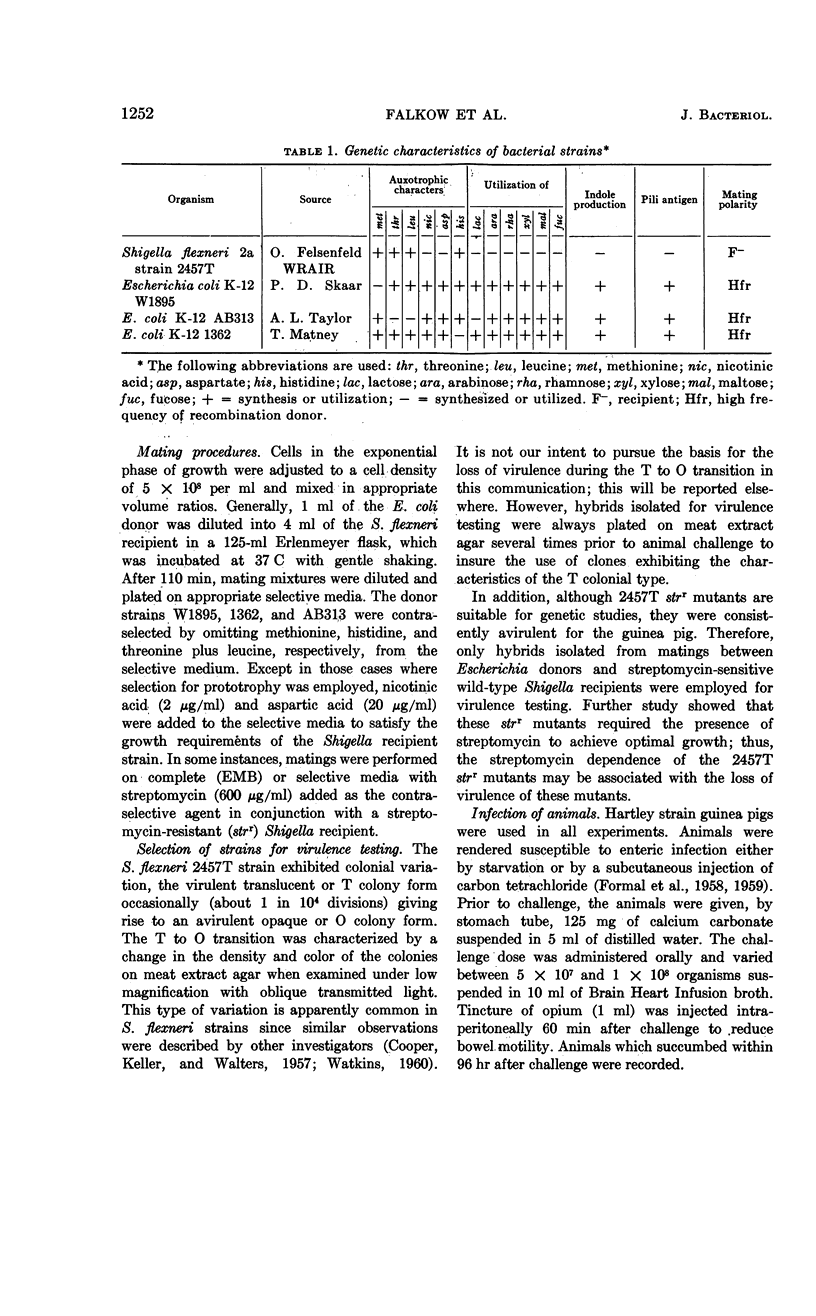
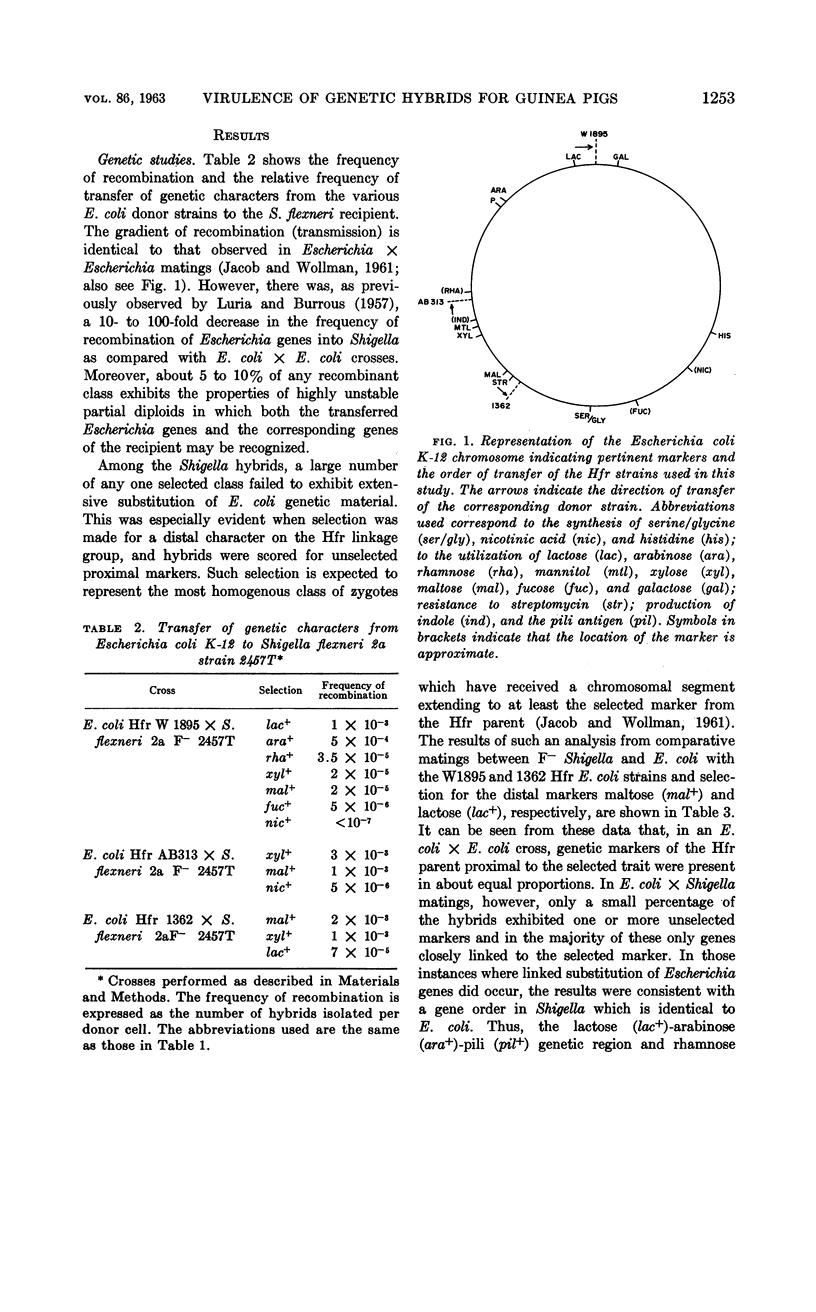

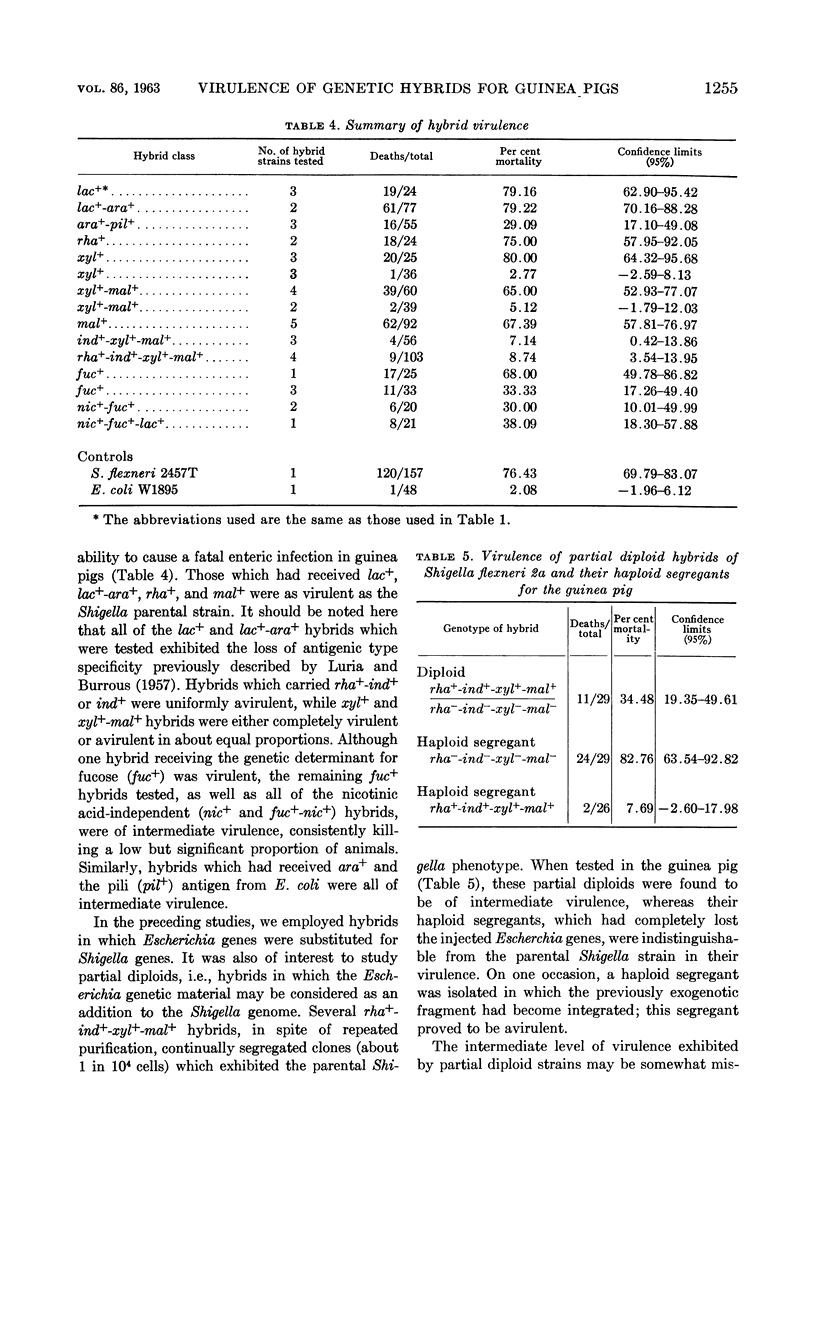
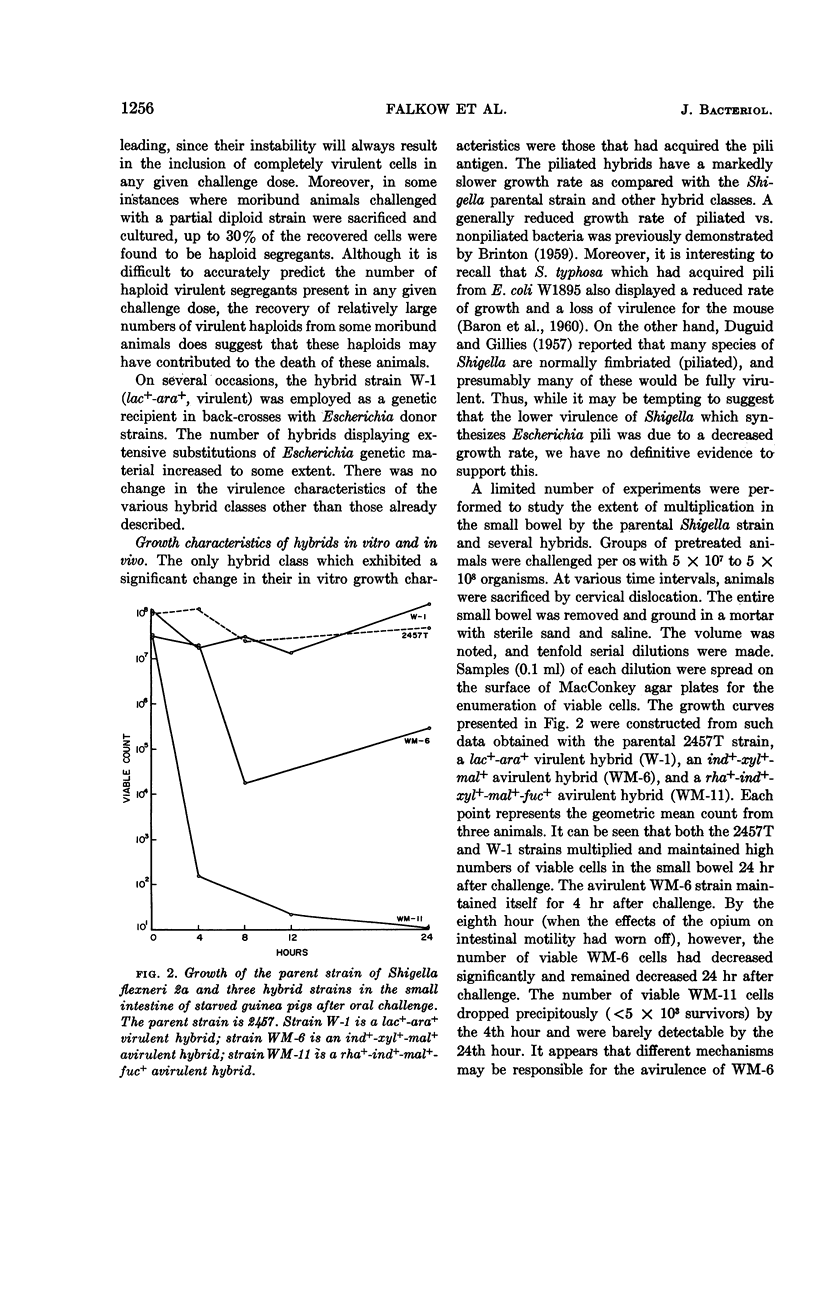

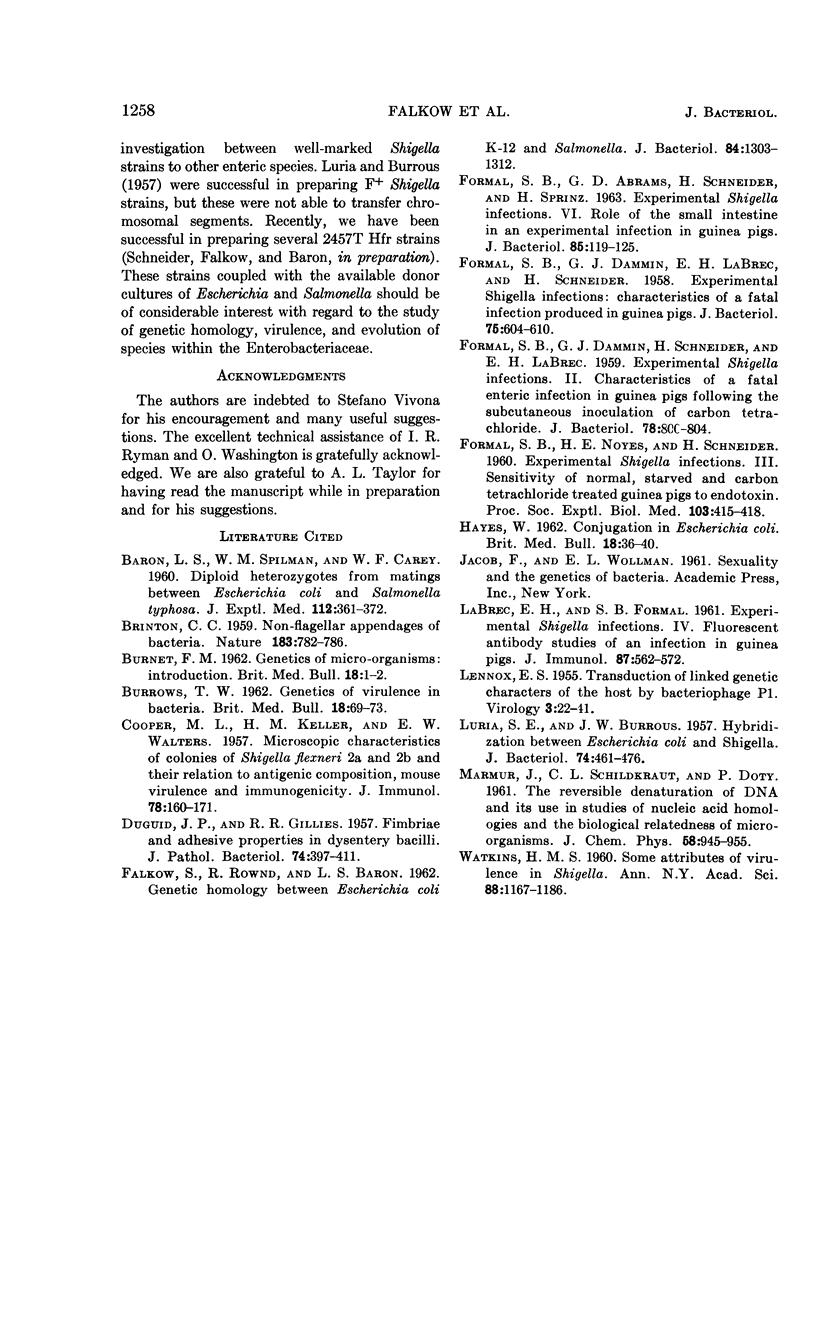
Selected References
These references are in PubMed. This may not be the complete list of references from this article.
- BARON L. S., SPILMAN W. M., CAREY W. F. Diploid heterozygous hybrids from matings between Escherichia coli and Salmonella typhosa. J Exp Med. 1960 Aug 1;112:361–372. doi: 10.1084/jem.112.2.361. [DOI] [PMC free article] [PubMed] [Google Scholar]
- BRINTON C. C., Jr Non-flagellar appendages of bacteria. Nature. 1959 Mar 21;183(4664):782–786. doi: 10.1038/183782a0. [DOI] [PubMed] [Google Scholar]
- BURROWS T. W. Genetics of virulence in bacteria. Br Med Bull. 1962 Jan;18:69–73. doi: 10.1093/oxfordjournals.bmb.a069938. [DOI] [PubMed] [Google Scholar]
- COOPER M. L., KELLER H. M., WALTERS E. W. Microscopic characteristics of colonies of Shigella flexneri 2a and 2b and their relation to antigenic composition, mouse virulence and immunogenicity. J Immunol. 1957 Mar;78(3):160–171. [PubMed] [Google Scholar]
- FORMAL S. B., ABRAMS G. D., SCHNEIDER H., SPRINZ H. Experimental Shigella infections. VI. Role of the small intestine in an experimental infection in guinea pigs. J Bacteriol. 1963 Jan;85:119–125. doi: 10.1128/jb.85.1.119-125.1963. [DOI] [PMC free article] [PubMed] [Google Scholar]
- FORMAL S. B., DAMMIN G. J., LABREC E. H., SCHNEIDER H. Experimental Shigella infections: characteristics of a fatal infection produced in guinea pigs. J Bacteriol. 1958 May;75(5):604–610. doi: 10.1128/jb.75.5.604-610.1958. [DOI] [PMC free article] [PubMed] [Google Scholar]
- FORMAL S. B., DAMMIN G. J., SCHNEIDER H., LABREC E. H. Experimental Shigella infections. II. Characteristics of a fatal enteric infection in guinea pigs following the subcutaneous inoculation of carbon tetrachloride. J Bacteriol. 1959 Dec;78:800–804. doi: 10.1128/jb.78.6.800-804.1959. [DOI] [PMC free article] [PubMed] [Google Scholar]
- FORMAL S. B., NOYES H. E., SCHNEIDER H. Experimental Shigella infections. III. Sensitivity of normal, starved and carbon tetrachloride treated guinea pigs to endotoxin. Proc Soc Exp Biol Med. 1960 Feb;103:415–418. doi: 10.3181/00379727-103-25541. [DOI] [PubMed] [Google Scholar]
- Falkow S., Rownd R., Baron L. S. GENETIC HOMOLOGY BETWEEN ESCHERICHIA COLI K-12 AND SALMONELLA. J Bacteriol. 1962 Dec;84(6):1303–1312. doi: 10.1128/jb.84.6.1303-1312.1962. [DOI] [PMC free article] [PubMed] [Google Scholar]
- HAYES W. Conjugation in Escherichia coli. Br Med Bull. 1962 Jan;18:36–40. doi: 10.1093/oxfordjournals.bmb.a069932. [DOI] [PubMed] [Google Scholar]
- LABREC E. H., FORMAL S. B. Experimental Shigella infections. IV. Fluorescent antibody studies of an infection in guinea pigs. J Immunol. 1961 Nov;87:562–572. [PubMed] [Google Scholar]
- LURIA S. E., BURROUS J. W. Hybridization between Escherichia coli and Shigella. J Bacteriol. 1957 Oct;74(4):461–476. doi: 10.1128/jb.74.4.461-476.1957. [DOI] [PMC free article] [PubMed] [Google Scholar]
- WATKINS H. M. Some attributes of virulence in Shigella. Ann N Y Acad Sci. 1960 Nov 21;88:1167–1186. doi: 10.1111/j.1749-6632.1960.tb20107.x. [DOI] [PubMed] [Google Scholar]


